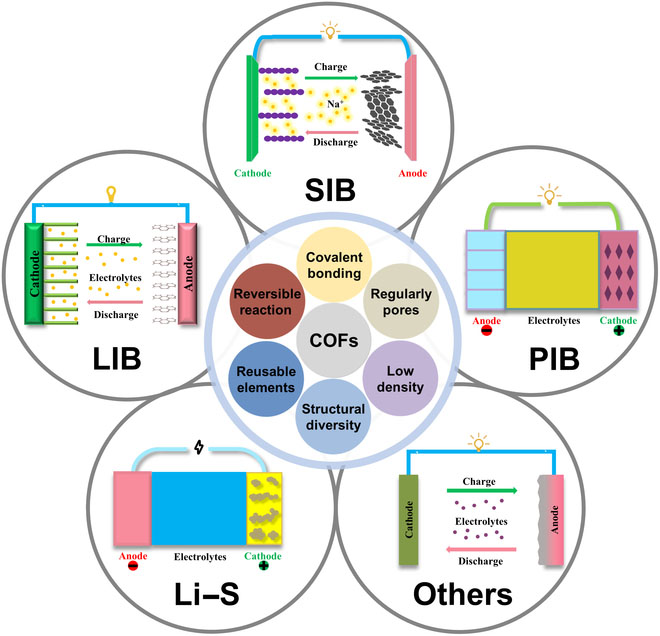| Mar 21, 2024 |
The role of covalent organic frameworks in advancing alkaline ion batteries
(Nanowerk News) "Designing highly conductive and superior-performance materials is crucial for the advancement of alkaline ion batteries," stated Xijun Xu, Associate Professor at the College of Chemical Engineering and Light Industry of Guangdong University of Technology.
|
|
As the development of large-scale power systems, like electric vehicles, accelerates, there's a growing shift in the demand for secondary batteries towards models that are both high-powered and cost-effective. The quest for sustainable and eco-friendly energy solutions has also become a focal point of research due to rising energy and environmental concerns.
|
|
Currently, lithium-ion batteries dominate the market as the primary choice for energy storage. Nonetheless, the scarce distribution and high cost of lithium resources underscore the importance of exploring alternative solutions like high-performance, safe alkaline ion batteries, which are of significant practical importance.
|
|
Xu highlighted that covalent organic framework (COF) materials are emerging as promising candidates due to their excellent electrochemical performance, structural stability, and remarkable cycling performance. These materials are gaining attention for their potential in electronics and energy storage applications.
|
 |
| Schematics of COF application in different battery systems, including LIBs, SIBs, PIBs, Li-S batteries, and other batteries. (Image: Guangdong University of Technology)
|
|
COFs are particularly notable for their ability to pre-design oxidation-reduction active sites with exact density and positioning, which enhances the energy density of electrode materials. Furthermore, incorporating organic functional groups into COF structures improves the migration of metal ions, potentially overcoming the challenge of slow ion transport in batteries.
|
|
A common strategy to enhance the intrinsic conductivity of organic electrode materials involves adding functional groups or heteroatoms with strong electron-withdrawing properties. This approach not only reduces the bandgap but also increases conjugation.
|
|
It's essential to design COF materials with high stability and capacity, keeping in mind that larger ion sizes in alkali metal ion batteries can lead to slower ion transport rates and significant volume changes during cycling. The design principles for COFs in battery systems focus on regulating pore structures, chemical reaction sites, and surface functional groups to achieve stable and efficient alkaline ion battery systems.
|
|
However, the field of COF batteries is still nascent and faces several challenges, including complex synthesis conditions that hinder large-scale production and the presence of structural defects in polycrystalline COFs. Xu emphasized the clear connection between COFs' adaptable structure and their battery performance, noting that extensive application and improvements in understanding electrochemical reactions are crucial for designing high-performance materials. Further research into COFs' application in batteries is essential, and overcoming current challenges will enhance their electrochemical properties, making them more viable for practical applications.
|
|
The authors published their review in Energy Material Advances ("Recent Advances and Perspectives of Covalent Organic Frameworks for Alkali-Ion Batteries").
|

